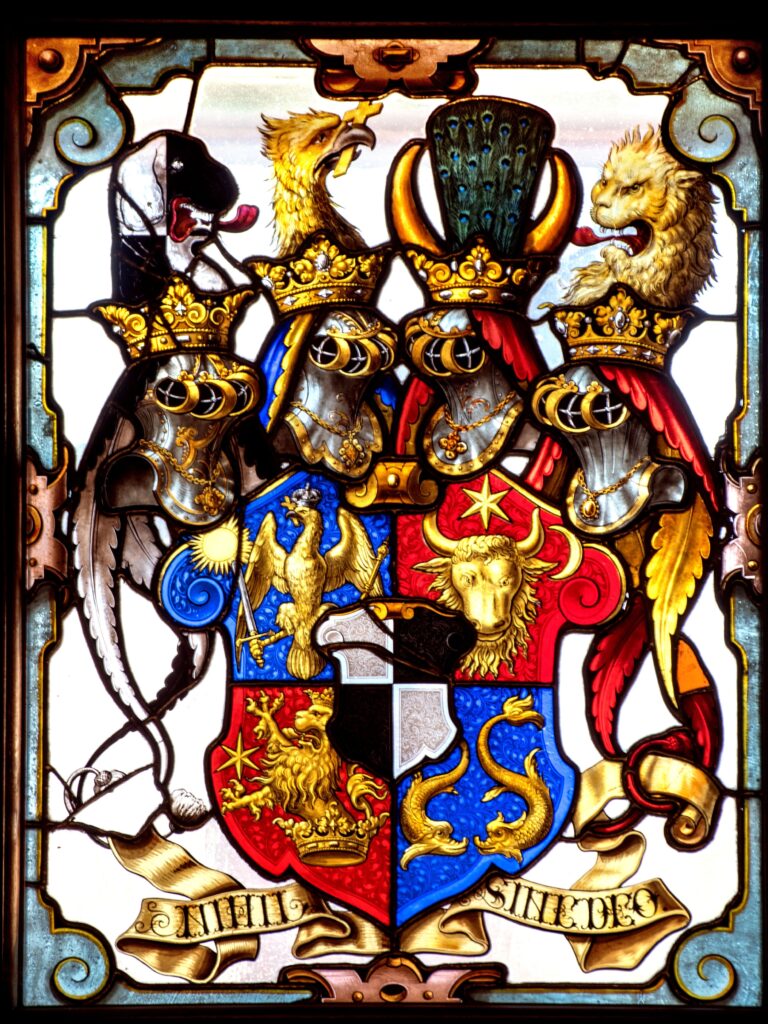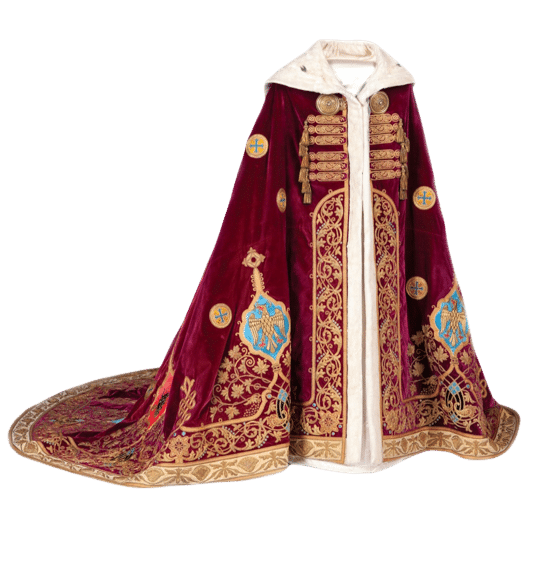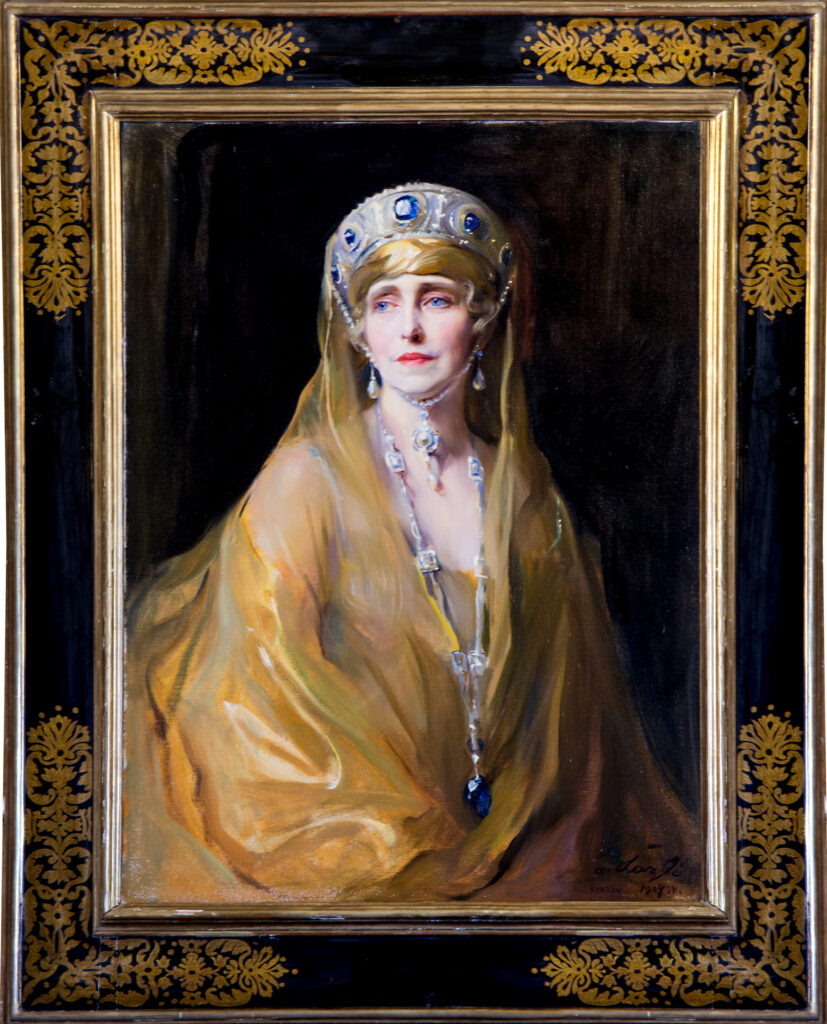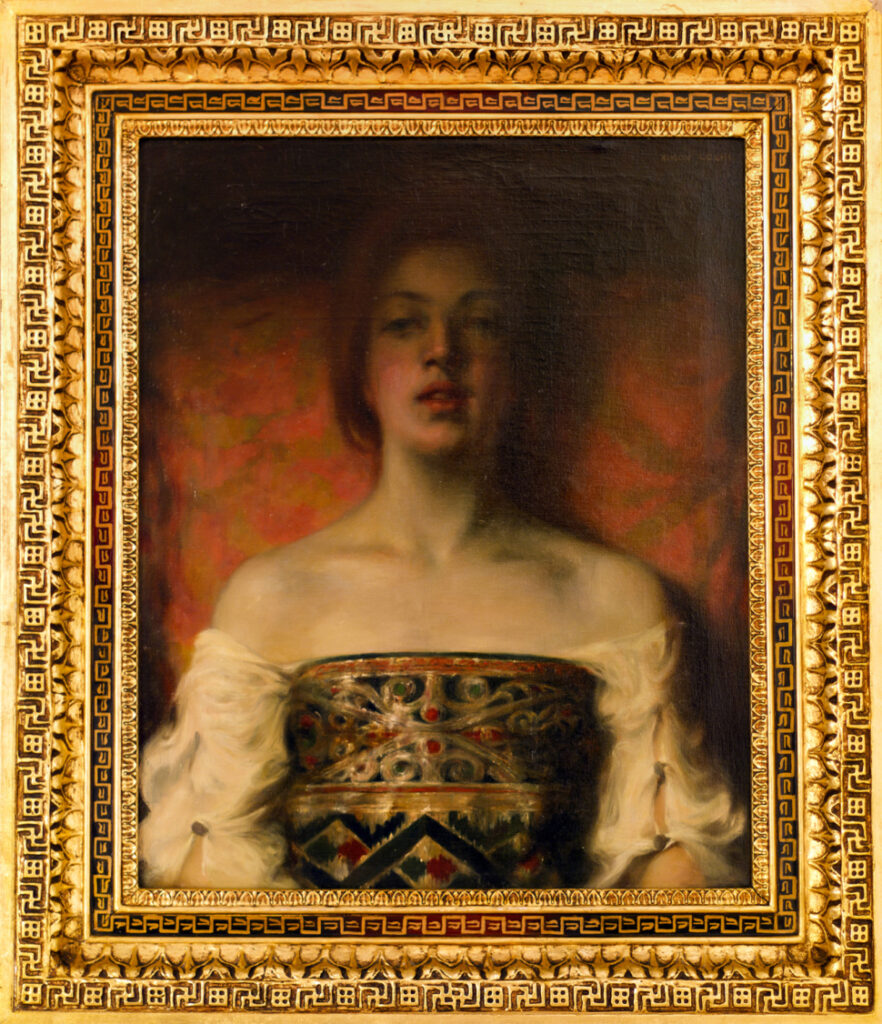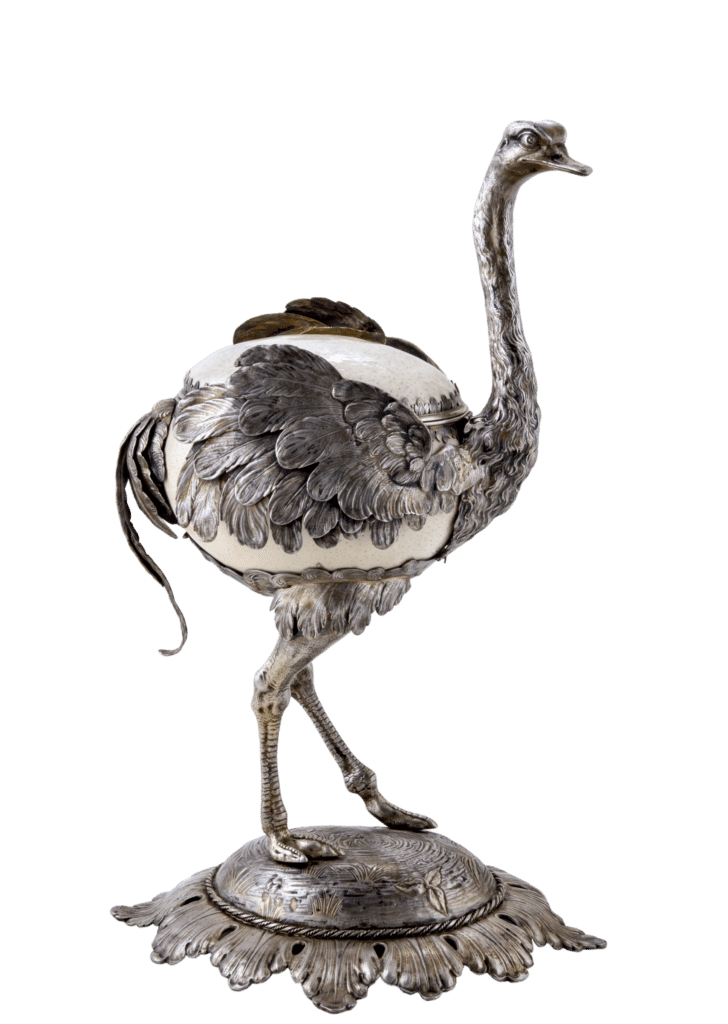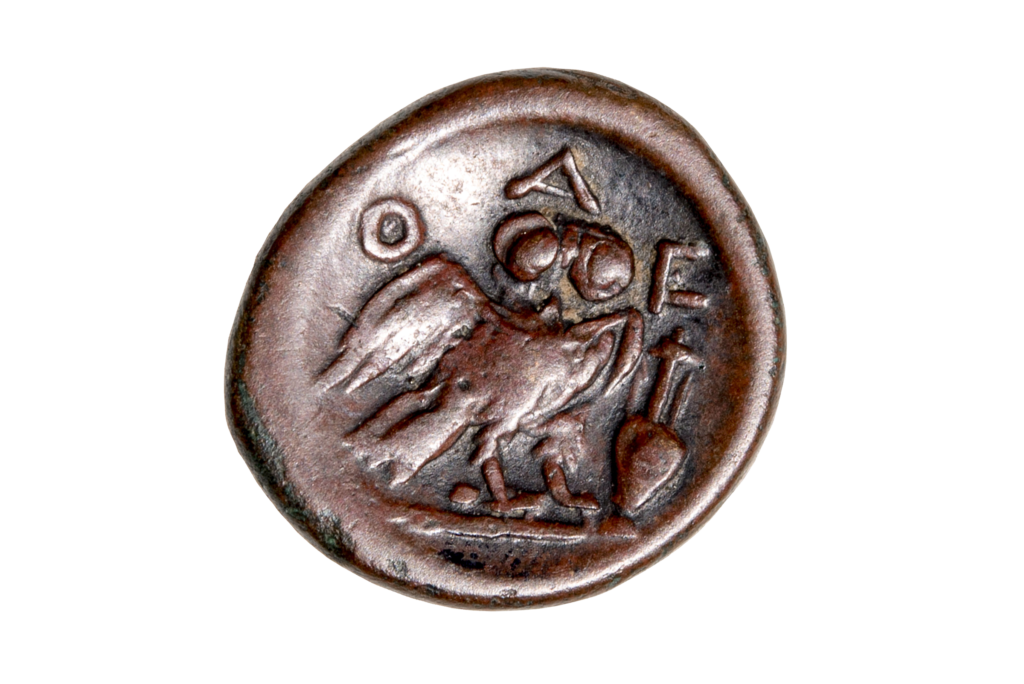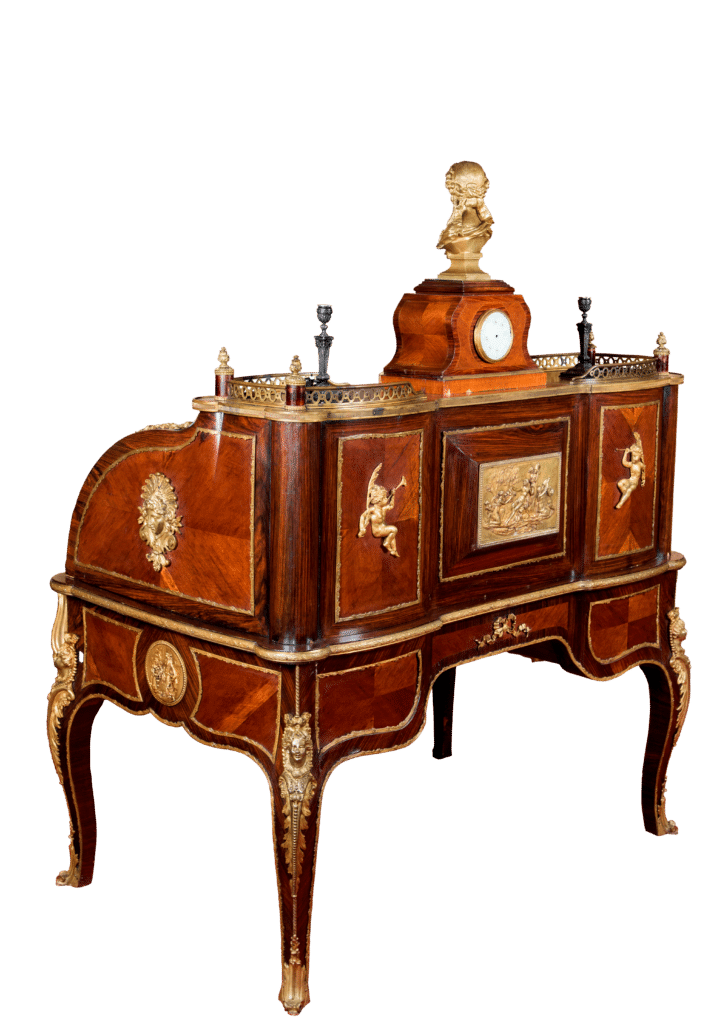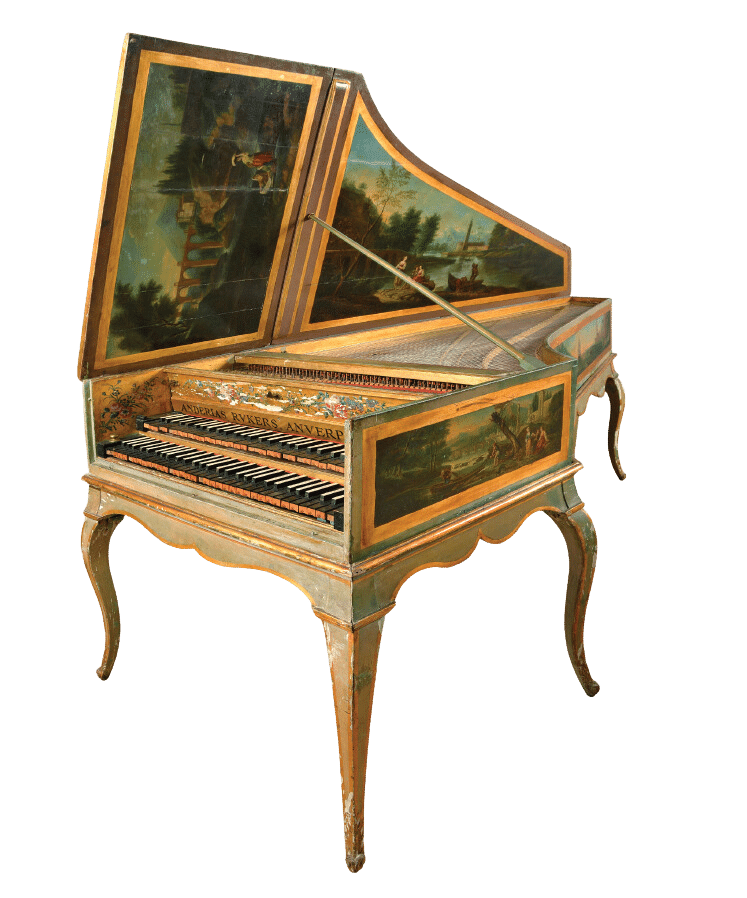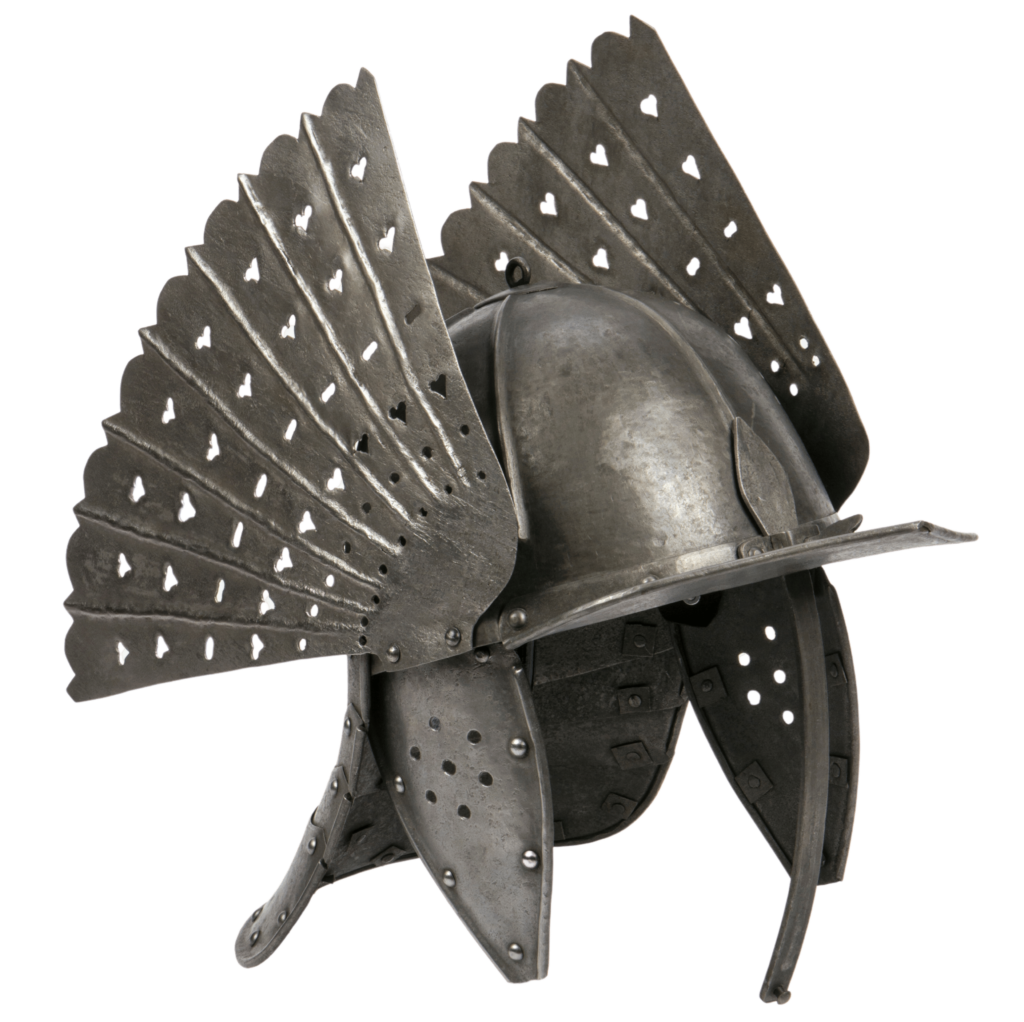Princess Helena of Greece and Denmark, wife of King Carol II of Romania and mother of King Michael I, was born on 2 May 1896 in Athens. She was the eldest daughter of King Constantine I of Greece and Queen Sophia of Prussia. On her paternal side, Helena was descended from Empress Catherine the Great, and on her maternal side, from Queen Victoria of Great Britain. She was related to the Emperor of Germany, and to the kings of Denmark, Norway, and Sweden.
Elena spent her childhood and adolescence in sunny Greece, alongside her siblings, George, Alexandru, Paul, Irina and Katerina. The sunny days at Tatoi, the modest summer palace of the royal family, the trips to Corfu, the picturesque island bathed by the Ionian Sea, in whose waves Elena often swam, remained forever etched in her memory.
The young princess received a strict education, alongside Miss Nichols, the governess who imposed strict rules on her in all respects. In order to improve her knowledge of English, she attended summer courses at the Seaford and then Eastbourne Schools for seven years. At the same time, she practiced horse riding, gymnastics and cycling. Elena transformed from a playful child into a slender, tall and humorous teenager, despite her shyness and reserve outside the family circle. Erudite, she knew the fine arts, music and literature and liked to surround herself with personalities of the era.
But the happy days were numbered: in 1910, King George I, the paternal grandfather, was forced to abdicate in favor of his son, Constantine. Two years later, Greece, a member of the Balkan League, became involved in the wars of 1912–1913, expanding its territory into Epirus, Macedonia, and Crete. Devoted to the cause of her homeland, Elena accompanied her mother and sisters to the conflict zone, where she worked as a nurse. At the end of the war, the fate of the royal family was marked by the tragic death of the former king, George I, assassinated in Thessaloniki.
The Peace of Bucharest, of August 10, 1913, finds Greece in the victorious camp, but its internal enemies prove to be much more formidable: at the beginning of the First World War, Constantine I proclaims neutrality. Venizelos, the politician with anti-monarchical views, a supporter of Greece entering the war on the side of the Entente, forces the signing of the alliance with France, Great Britain and Russia, in 1917. Constantine I abdicates in favor of his second son, Alexandru, who governs until 1920, the year in which Constantine is reinstated on the throne for two years. This is the dramatic context in which the meeting of Princess Elena with the future king of Romania, Carol II, takes place.
The two young people met in Lausanne, Switzerland, where they got engaged on January 12, 1921, after which they attended together the ceremony in Bucharest of the engagement of Princess Elisabeta to George of Greece. The young engaged couple traveled to Greece, where Elena acted as hostess for the Romanian prince, who was very interested in the local culture and the vestiges of antiquity. On March 10, 1921, in the Orthodox Cathedral of Athens, in the presence of the two royal families and over 80 guests, Carol and Elena got married. Witnessing the event, Queen Maria would note in her diary her fears regarding the future of their marriage, justified by the amorous complications in her son's recent past: ,,[…]love and fidelity … many promise each other this – may they keep it as long as they can, this is my prayer …”
The couple temporarily settled in a small apartment specially arranged by Queen Maria in a wing of the Cotroceni Palace, which Elena, with her characteristic humor, described as "a three-room staircase". In May 1921, the young people were allowed to live at Foişor, the old hunting lodge, which Elena amused herself by furnishing with highly refined English furniture. In December 1921, the government voted to purchase a house on Kiseleff Road in Bucharest, which Elena transformed into a luxurious house, decorated with valuable furniture purchased from the Harrods Company in London. On October 25, 1921, the heir to King Carol II was born in Foişor, baptized on January 10, 1922, Mihai, after the name of Voivode Mihai the Brave, by King Ferdinand and Queen Maria as the main godparents. Almost immediately, Elena decides to go to Athens, together with Mihai, where she stays for three months.
On June 8, 1922, he attended, together with Prince Carol, the marriage of Princess Mărioara to King Alexander I of Serbia, held in Belgrade. In parallel, the news from Greece was increasingly unfavorable to the royal family, engaged in a bloody war against Turkey, which was massacring and plundering the population of Smyrna. Unjustly accused of the Turkish genocide, Constantine I was forced to abdicate again, this time in favor of his eldest son, George II, who governed with difficulty for another two years, until the proclamation of the first Greek Republic (1924 – 1935). On October 15, 1922, the princes were present at the Coronation ceremonies in Alba Iulia and – despite all the difficulties – the couple still seemed united. Immediately after the event, Elena rushed to Palermo, in Sicily, where King Constantine was living his last moments. To Elena's dismay, he passed away on January 11, 1922, without his son, the King of Greece, being able to attend the funeral. Returning to Romania in the spring of 1923, Elena was confronted with the sad reality: Carol was involved in a passionate relationship with Elena Lupescu, whom she met at one of the events of the King Carol Foundation, of which he was honorary president.
Unhappy, but introverted and discreet by nature, Elena occupies her time with the education of Prince Mihai, who learns Romanian and English, rides a pony and takes photographs, and from the age of six, drives a car, under the careful supervision of the English governess, Miss St. John. In the spirit of royal tradition, she gets involved in charitable and social actions, lays the foundations of a medical project, in collaboration with the Red Cross in Paris, supports the national Church, as well as the institutions of other confessions and participates in military parades, as honorary colonel of the 9th Roşiori Regiment.
Salvation comes as always from the family: at the end of 1923, George and Elisabeta settle in the Cotroceni Palace in Bucharest, and Queen Sophia, Elena's mother, receives the right of residence in Romania. Passionate about interior decoration, for which she showed an innate talent, Elena feels less lonely and desperate among her Greek relatives. Two years pass in apparent calm. In November 1925, Queen Alexandra of the United Kingdom passes away. The Romanian royal house designates the crown prince as representative at the funeral. Carol, whose relationship with Elena Lupescu had become public knowledge, travels to London, then to Milan, where he is awaited by Mrs. Lupescu and from where he sends King Ferdinand the letter of abdication.
Constantin Hiott, Minister of the Royal Household, obtained from Carol the declaration of renunciation of all rights of succession to the throne, as well as of titles and prerogatives in favor of his son, Michael. The Crown Council, urgently convened at the initiative of King Ferdinand, on December 31, 1925, validated Carol's decision. On January 4, 1926, Parliament adopted a resolution by which Michael was proclaimed heir by right. Without a doubt, Carol's gesture marked the beginning of a new stage in the life of the princess, who sent him desperate letters and proposed in vain a private meeting. Carol remained steadfast in his decision for the time being.
Returning to the country, Elena spent hours at the bedside of the dying king. Their friendship had been impeccable: Ferdinand appreciated her lively intelligence and humor, and Elena, her intellectuality and modesty. The uncertainty of the future led her to cherish every moment with her princely offspring. On July 18, 1927, Ferdinand I passed away at Pelişor Castle, leaving behind a country divided between Carol's sympathizers and opponents. The next day, Prince Michael, aged only six, was proclaimed king and Elena understood the additional responsibilities that the position of mother of the Romanian sovereign implied. From abroad, Carol sent three letters to the country, in which he demanded a divorce. The profound Christian education received within the family, as well as the attitude of the Romanian government, prevented her from granting the request, but the unofficial interventions of Carol's shadow supporters, as well as the feeling of total alienation, determined her to accept: on June 21, 1928, the Supreme Court of Romania dissolved the marriage on grounds of "incompatibility".
Beyond the daily tribulations, Elena finds time to arrange the gardens of the Royal Palace of Mamaia, received in 1927 from Queen Maria. Elena transforms the royal park, introducing water pipes, changes the roads and lawns, and rearranges the interiors. At the beginning of the following year, she imposes a new regulation for the functioning of the Palace. At the same time, she lays the foundations for the annual equestrian competition, herself proving to be very experienced in the field. More active than ever, Elena visits hospitals, goes to the provinces, inaugurates clinics, encourages local culture, which brings her image capital, which – out of integrity and modesty – she does not exploit against her ex-husband. Dignified and resigned, Elena accompanies the little king to ceremonies and official events.
The Carlist restoration caught her completely unprepared for a reunion with Carol, which soon happened. On June 8, 1930, Carol returned to the country with the help of the National Peasant Party and with false promises of returning to better intentions towards his family. Immediately, the Act of Succession of January 4, 1926 was invalidated by Parliament. Elena helplessly witnessed the gradual seizing of the child by his father, who chose his teachers and entourage. With her innate elegance, she withdrew from public life, taking refuge either in the Palace of Mamaia or in the summer residence in Sinaia. Finally, the thing she feared most happened: Carol asked her to leave Romania. She settled first in London, then in Florence, but returned to Bucharest on the occasion of her son's birthday, where she remained until early 1932, when she visited her dying mother in Florence. Sophia of Greece died in January 1932 and was buried in the Russian Church, next to her husband, Constantine.
During her long walks in San Domenico, near Florence, Elena discovered an impressive Renaissance palace, which she bought and named "Villa Sparta", in memory of the happy moments in the lands of Greece. Delighted with the new acquisition, made with the money resulting from the sale of the Palace in Mamaia, as well as the farm near Bucharest, Elena focused on interior design. She moved into the new home only in the spring of 1934. Over time, one of the most interesting Romanian personalities of the era, Tutu Georgescu, who frequented her in Florence, wrote in his biography about Villa Sparta: "She had bought a house in Florence, on the Fiesole hill. Villa Sparta had a large balcony, which dominated the entire Tuscan valley with all the domes, all the splendors and spires of Florence, with orange groves always in bloom. It was an extraordinarily well-kept house, like a nun's. "Everything is shiny, beautiful."
According to an agreement between Elena and the Romanian Royal House, Grand Voivode Michael was allowed to spend two months a year with his mother, but the terms were often brutally violated by Carol. In the fall of 1932, following an unpleasant incident, Elena ignored the ban on returning to the country and remained in Romania for three weeks.
From 1932 to 1940, she lived years of peace and pleasure in Florence, with members of her Greek family. Time passed according to the presence or absence of her beloved son. Her inclination towards culture led her to familiarize herself with the city and its surroundings: she regularly visited museums, churches, and libraries. She learned Italian, thus speaking five foreign languages fluently, along with Greek, Romanian, French, and German, and – as was her custom – she went horseback riding every morning.
All the while, political events were happening: in 1934, King Alexander of Serbia was assassinated in Marseille. Maintaining good relations with Mignon, Elena frequently traveled to Belgrade. In 1935, the divorce of the George – Elisabeth couple was pronounced. In the same year, George returned to the throne of Greece following a national plebiscite. In 1936, with great emotion, Elena, Irina and Katerina traveled to Athens, on the occasion of the reburial ceremony of the sovereigns who had died in exile, Constantine and Sophia. In the following years, two of her brothers, Paul and Irina, got married and, happily, Elena hugged her first grandson, Constantine, the son of Paul and Frederica of Hanover.
The pastel colors of the happy family picture are eclipsed, however, by the increasingly dark political background. Europe was on the verge of a new world war: in March 1938, Hitler's Germany occupied Austria and early the following year, Czechoslovakia. On September 1, 1939, Poland was attacked by Russia and Germany. One by one, all the small states – forced to join one of the military blocs – were eliminated from the political scene or reduced to the thankless position of mere pawns. This was also the fate of Romania. Following the Vienna Dictate of August 30, 1940, more than half of the territory of Transylvania was ceded to Hungary, Bessarabia and northern Bukovina to Russia, and Dobrogea to Bulgaria. Faced with a disaster of such proportions, King Carol II was forced to abdicate by his own army. On September 6, 1940, he left Romania, accompanied by Elena Lupescu, with a temporary destination of Paris.
The news of her ex-husband's abdication reached Elena through the US ambassador in Berlin, an old acquaintance. Shortly afterwards, she received an invitation to return to Romania, as Queen Mother. The addressee, none other than Marshal Ion Antonescu, had kept a vivid memory of her from the time she had served in the 9th Roşiori Regiment. On September 13, 1940, Elena was officially welcomed to Bucharest. In less than a year, on June 22, 1941, the Romanian army entered the war on the side of Germany, overcoming with difficulty and with numerous human sacrifices the first years of the war, the legionary government from September 1940-January 1941 and the legionary rebellion of January 21-23. Reinstated as a nurse, Elena ordered the transformation of a wing of the Royal Palace into a hospital, which she coordinated with unsuspected administrative sense.
In April 1941, Greece was defeated by the Italian-German troops, and King George went into self-exile in Egypt. Devastated, Elena had to accompany Michael to Berlin and Rome, respectively, where he held official talks with the executioners of his homeland, Hitler and Mussolini. Between two social duties, Elena always found the time to renovate the castle in Săvârşin, in Arad County, which she bought together with the king. Installed in the official residence in Foişor, she hired the family of restorers of the Uffizzi Gallery's canvases, Vermeyer, to take care of the painting collection of the Royal House. She participated with some restraint in the royal hunts, but she traveled tirelessly around the country.
The historical act of August 23, 1944 finds her in Sinaia. Notified of the turning of arms against Germany and the arrest of Marshal Antonescu, Elena goes through nightmare moments: she knows that her son's life is in danger. At 10:00 p.m., Radio Bucharest broadcasts King Michael's Proclamation live. General Sănătescu takes over the leadership of the new government, amid German air attacks, which bombard Bucharest. The New House, a building located on the grounds of the Royal Palace, serving as King Michael's private residence, is set on fire. The King abruptly leaves the capital for an unknown direction. Elena follows him on the Braşov - Târgu-Jiu - Bumbeşti Jiu route, where the two reunite. For two weeks, the King and the Queen Mother live incognito in the village of Dobriţa.
Returning to the capital, they now face the real danger, the Soviet one, which is working to remove the Monarchy. Thus, the commissioner Andrei Vâşinski, responsible for the Balkans, demands that the sovereign dismiss the Rădescu government and replace it with a communist government. Despite royal opposition, on March 2, 1945, the Groza government takes power. The duplicitous attitude of Soviet Russia goes so far that, in July 1945, King Michael is awarded the Victoria Order for his outstanding war merits, amid the increasingly alarming internal disorders, countered by the royal strike. Withdrawn to Sinaia, Michael I addresses appeals to Russia, England and the United States, which formally send their representatives. In March 1946, President Truman awards him the Legion of Merit. Despite the gesture of consideration from a superpower like the United States, the People's Tribunal, illegally established by the communists, executes Ion Antonescu on June 1, and the elections of November 1946 are rigged. With fear, but not without humor, Elena witnesses the quasi-total enslavement of Romania to a hostile power, through people of low social extraction, demagogues and false patriots, enslaved to Stalin's policy. And since misfortune never comes alone, on April 1, 1947, Elena receives news of the sudden death of her brother, George II.
In October 1947, Queen Elizabeth II of Great Britain officiated her marriage to Prince Philip of Greece and Denmark, the Queen Mother's grandson. Invited to the ceremony, Michael and Elena traveled to London, from where they returned on December 21, 1947, to the indignation of the communist government. Inconvenient by the presence of the two, the communists forced King Michael to leave, threatening to assassinate over a thousand students who had come to chant his name under the windows. Urgently summoned to the Elizabeth Palace by Petru Groza and Gheorghe Gheorghiu – Dej, the king was faced with a hopeless situation: on December 30, 1947, overwhelmed by circumstances, Michael I signed the act of abdication. On January 3, 1948, Elena left Romania forever. Thus ended the last chapter of Elena's Romanian existence, destined to share the fate of her Greek family.
For over three decades, Elena of Greece lived in Florence, surrounded by artists, writers, poets, jewelers, horticultural architects, in the midst of her flower and orange gardens, books and rare objects. In the memory of those who knew her and appreciated her for her true worth, Elena remained one of the most distinguished royal personalities of the century. Elegant, discreet, refined, endowed with a unanimously recognized sense of humor, but also with a critical spirit to match, Elena aroused the admiration of some remarkable contemporaries for their beauty, such as Queen Maria of Romania, who cataloged her as "adorable", while Marta Bibescu described her as "presentable, tall, brunette, with a discreet charm and a pleasant nature that attracted those around her".
The material constraints of the last years of her existence led her to give up Villa Sparta, her home of soul, and to move in 1980 to Lausanne, where she passed away at the age of 86, on November 28, 1982.
Integrity, discretion, elegance were harmoniously intertwined in her personality with determination, a spirit of justice and courage. Elena did her duty to her princely and royal status in an exemplary manner. During the war, she steadfastly opposed the persecution of the Jewish population in Romania, which she supported by all means. Over time, her exceptional merits in the fight against the horrors of anti-Semitism brought her recognition as "Righteous Among the Peoples", a distinction awarded posthumously, in 1993, by the State of Israel through the Yad Vashem Institute in Jerusalem.

